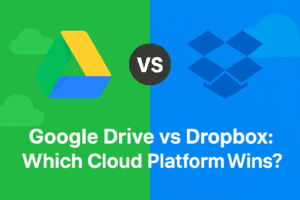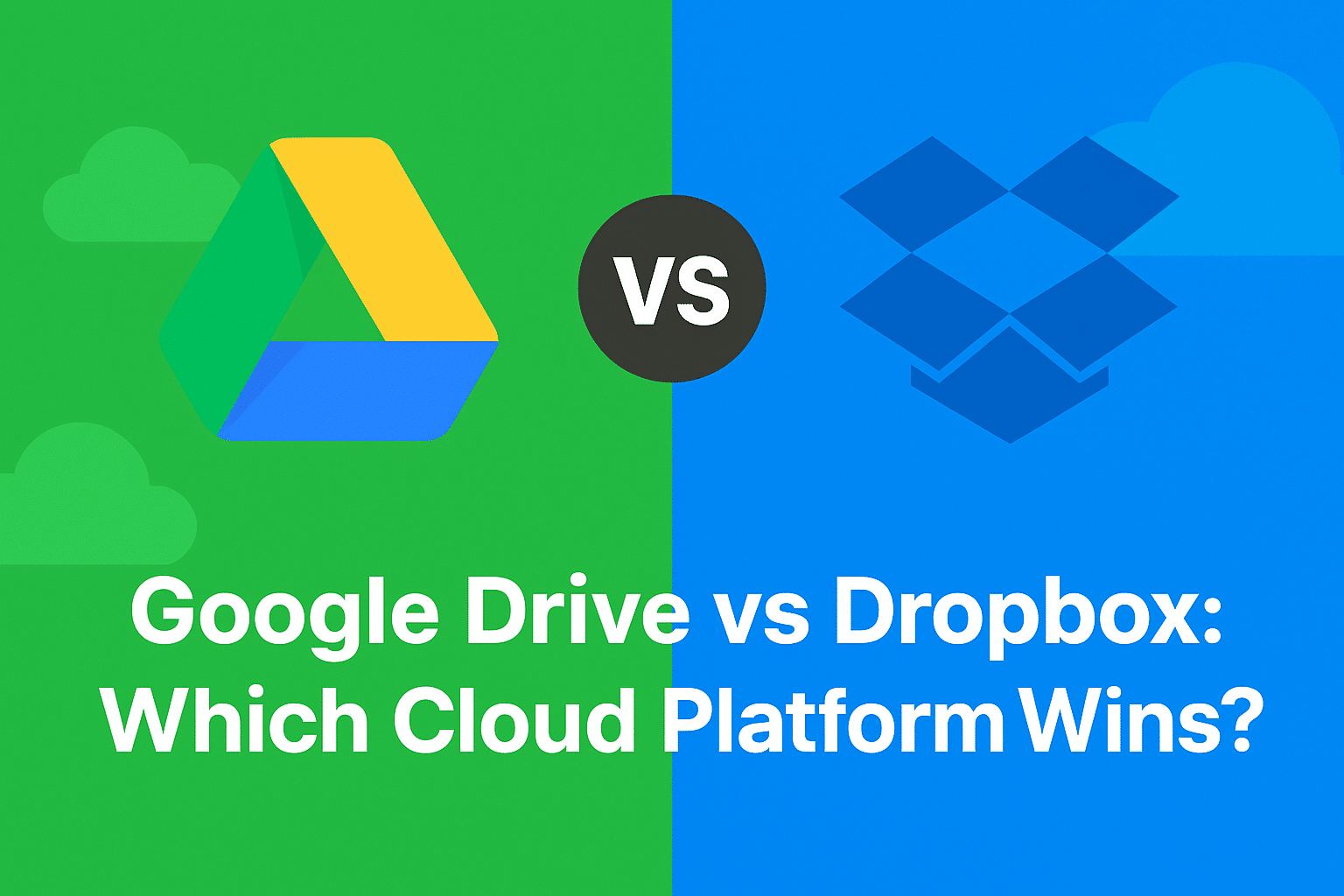Introduction
Cloud storage has become a necessity in today’s digital world. Whether you’re storing photos, collaborating on projects, or backing up important files, choosing the right cloud platform is essential. Two of the most popular options are Google Drive and Dropbox. Both services have their strengths, but which one is the better choice in 2025? Let’s dive into a detailed comparison.
1. Pricing and Storage Options
When it comes to free storage, Google Drive takes the lead. It offers 15GB of free storage, shared across Google services like Gmail and Google Photos. In contrast, Dropbox provides only 2GB of free storage, which may not be enough for most users.
For paid plans, Google Drive (through Google One) offers affordable tiers starting at 100GB, while Dropbox focuses on larger plans such as 2TB. If you need small increments of storage, Google is more flexible. If you want a big, powerful storage plan for professional use, Dropbox may be worth the investment.
2. Ease of Use and Interface
Google Drive is tightly integrated with the Google ecosystem, making it a natural choice for anyone already using Gmail, Google Docs, or Android devices. Its interface is straightforward, and navigating between files and apps feels seamless.
Dropbox, on the other hand, is praised for its clean and simple design. It’s easy to set up, and its desktop app feels lighter compared to Google Drive’s. While Google focuses on integration, Dropbox shines in delivering a minimal, distraction-free experience.
3. File Sync and Speed
File synchronization is where Dropbox traditionally outperforms Google Drive. With its Smart Sync feature, Dropbox allows you to see all your files without downloading them to your device, saving disk space. Sync speeds are also generally faster and more reliable.
Google Drive offers Drive File Stream for business users, which works similarly, but syncing large files can sometimes feel slower. However, for everyday use, Google’s sync performance is still solid.
4. Security and Privacy
Both Google Drive and Dropbox use strong encryption standards, including AES-256 encryption for stored files and SSL/TLS for data transfers. They also support two-factor authentication (2FA) for added protection.
The main difference lies in privacy. Google has faced criticism for using data insights across its ecosystem, which may raise concerns for privacy-focused users. Dropbox, being more neutral, doesn’t mine user data in the same way, making it a better choice for those who prioritize privacy.
5. Collaboration and Productivity Tools
Google Drive is unmatched in this area. With Google Docs, Sheets, and Slides, real-time collaboration is seamless and built directly into the platform. Teams can work on the same document simultaneously, making it ideal for students, businesses, and remote teams.
Dropbox offers Dropbox Paper, which is useful but not as widely adopted. Its strength lies in third-party integrations, connecting with tools like Slack, Zoom, and Trello. This makes Dropbox appealing for businesses that already rely on multiple collaboration tools.
6. Best Use Cases

Google Drive: Perfect for individuals, students, and anyone already in the Google ecosystem. It’s the go-to option if you value free storage, easy sharing, and productivity tools.
Dropbox: Best suited for professionals and businesses that need advanced sync capabilities, speed, and robust third-party integrations.
Conclusion
So, who wins the battle of Google Drive vs Dropbox? The answer depends on your needs:
Choose Google Drive if you want generous free storage, seamless integration with Google services, and built-in productivity tools.
Choose Dropbox if you prioritize faster syncing, business-friendly features, and better privacy practices.
Both platforms are excellent, but the “winner” is the one that fits your workflow best.
Related Article
For more tips on secure cloud storage and choosing the right service, check out our previous guide:
The Best Cloud Storage Services in 2025

